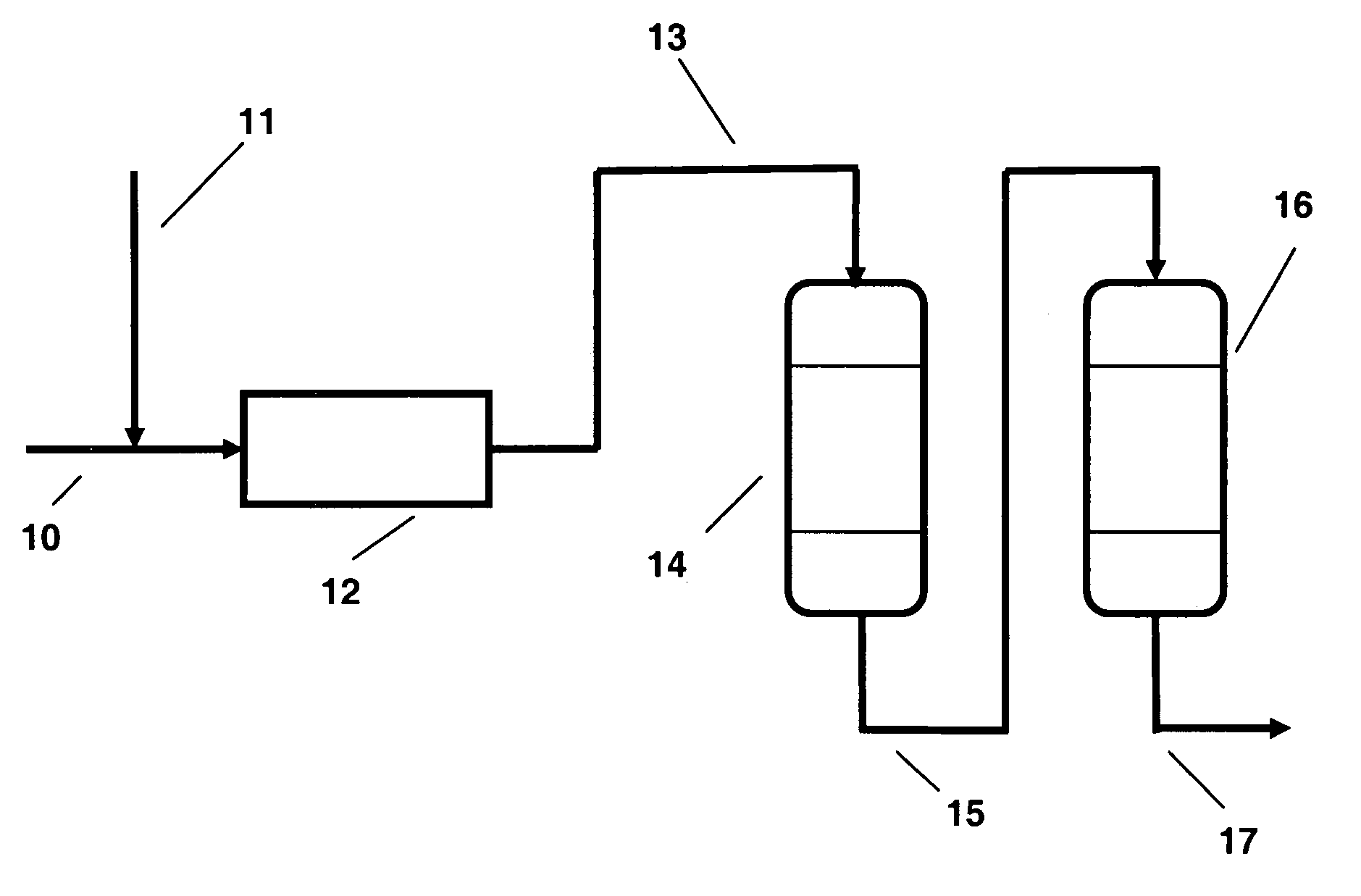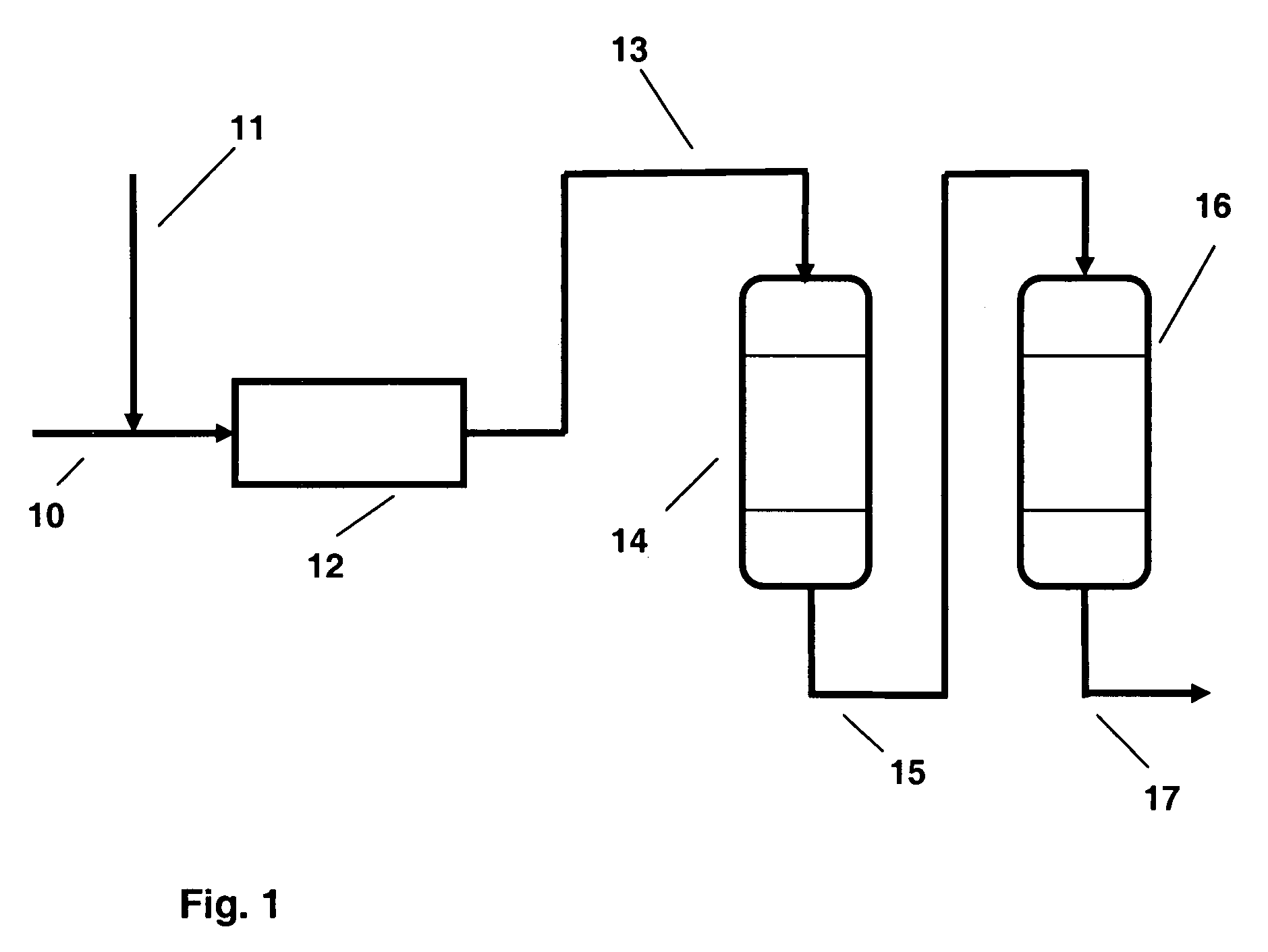Wastewater mercury removal process
a technology of mercury removal and wastewater, applied in the nature of treatment water, multi-stage water/sewage treatment, other chemical processes, etc., can solve problems such as processing problems, reducing the life of processing catalysts, and raising problems with mercury presen
- Summary
- Abstract
- Description
- Claims
- Application Information
AI Technical Summary
Benefits of technology
Problems solved by technology
Method used
Image
Examples
Embodiment Construction
[0014]The following preferred embodiments of the invention are described by way of illustration. All stated proportions and percentages are by weight unless indicated to the contrary.
[0015]As shown in the FIG. 1, the mercury-containing aqueous stream enters a treatment unit for processing according to the present invention by way of line 10 where it meets an injected aqueous stream of water-soluble mercury precipitant entering from line 11. Upon mixing of the two streams, which typically takes place readily in the flow lines, a reaction occurs to precipitate dissolved ionic mercury out of solution. The stream then passes into a flotation tank 12 in which the precipitated solids are separated by flotation in the conventional manner. The liquid from the floatation tank then passes through line 13 to filter 14 in which residual precipitated ionic mercury particles are removed. The resulting filtrate then passes through line 15 to vessel 16 for an activated carbon polishing step in whic...
PUM
| Property | Measurement | Unit |
|---|---|---|
| particle size | aaaaa | aaaaa |
| particle sizes | aaaaa | aaaaa |
| organic | aaaaa | aaaaa |
Abstract
Description
Claims
Application Information
 Login to View More
Login to View More - R&D
- Intellectual Property
- Life Sciences
- Materials
- Tech Scout
- Unparalleled Data Quality
- Higher Quality Content
- 60% Fewer Hallucinations
Browse by: Latest US Patents, China's latest patents, Technical Efficacy Thesaurus, Application Domain, Technology Topic, Popular Technical Reports.
© 2025 PatSnap. All rights reserved.Legal|Privacy policy|Modern Slavery Act Transparency Statement|Sitemap|About US| Contact US: help@patsnap.com


